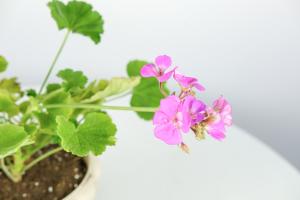Is it True Maguey Plants Produce More Oxygen than Trees?
The answer to the question of whether maguey plants produce more oxygen than trees is complicated. While maguey plants do produce a significant amount of oxygen, trees cover a much larger surface area and, therefore, can produce more overall oxygen than maguey plants. However, there are still some important reasons why maguey plants are important in their own right, and can improve air quality in specific ways.
The Oxygen-Producing Capabilities of Trees
It is often said that trees are the “lungs of the earth,” as they are known to produce a significant amount of oxygen through the process of photosynthesis. Trees take in carbon dioxide and water, using the energy from sunlight to create oxygen and glucose molecules. According to NASA, a single mature tree can produce enough oxygen for two human beings to breathe for an entire year. However, the type and size of the tree, as well as its environment, can affect how much oxygen it produces. For example, a mature oak tree can produce up to 260 pounds of oxygen, while a mature pine tree can produce around 100 pounds. A small sapling will not produce nearly as much oxygen as its fully-grown counterparts.
The Oxygen-Producing Capabilities of Maguey Plants
While maguey plants do produce oxygen, they are not typically listed among the top oxygen-producing plants in the world. However, they are still important to air quality because they have the ability to absorb harmful toxins and pollutants from the air. Maguey plants are known for their ability to filter out volatile organic compounds (VOCs), which are emitted by certain household chemicals, cleaning products, and even furniture. When an area is filled with too many VOCs, it can contribute to a condition known as “sick building syndrome,” which can cause headaches, fatigue, and other health problems. Maguey plants can help mitigate the effects of sick building syndrome by absorbing these VOCs and producing cleaner, purer air.
The Benefits of Maguey Plants
While maguey plants are not known for their oxygen-producing capabilities like trees, they are an important part of air quality and can help create a healthier living environment. They are also useful in other ways – for example, the leaves of the maguey plant have been used for centuries in Mexican culture to create textiles, with fibers from the leaves being spun into thread for weaving. As a food source, the sap from the maguey plant can be processed into the alcoholic beverage known as pulque, which is a staple of traditional Mexican cuisine.
In conclusion, while maguey plants do produce oxygen, they are not capable of producing as much as trees due to the vast difference in size between the two. However, maguey plants are still valuable in their own right for their filtering capabilities and other unique uses. Both trees and maguey plants offer distinct benefits to air quality and the environment, and it is important to recognize and maintain the balance between the two.

 how many times do yo...
how many times do yo... how many planted tre...
how many planted tre... how many pine trees ...
how many pine trees ... how many pecan trees...
how many pecan trees... how many plants comp...
how many plants comp... how many plants can ...
how many plants can ... how many plants and ...
how many plants and ... how many pepper plan...
how many pepper plan...
































